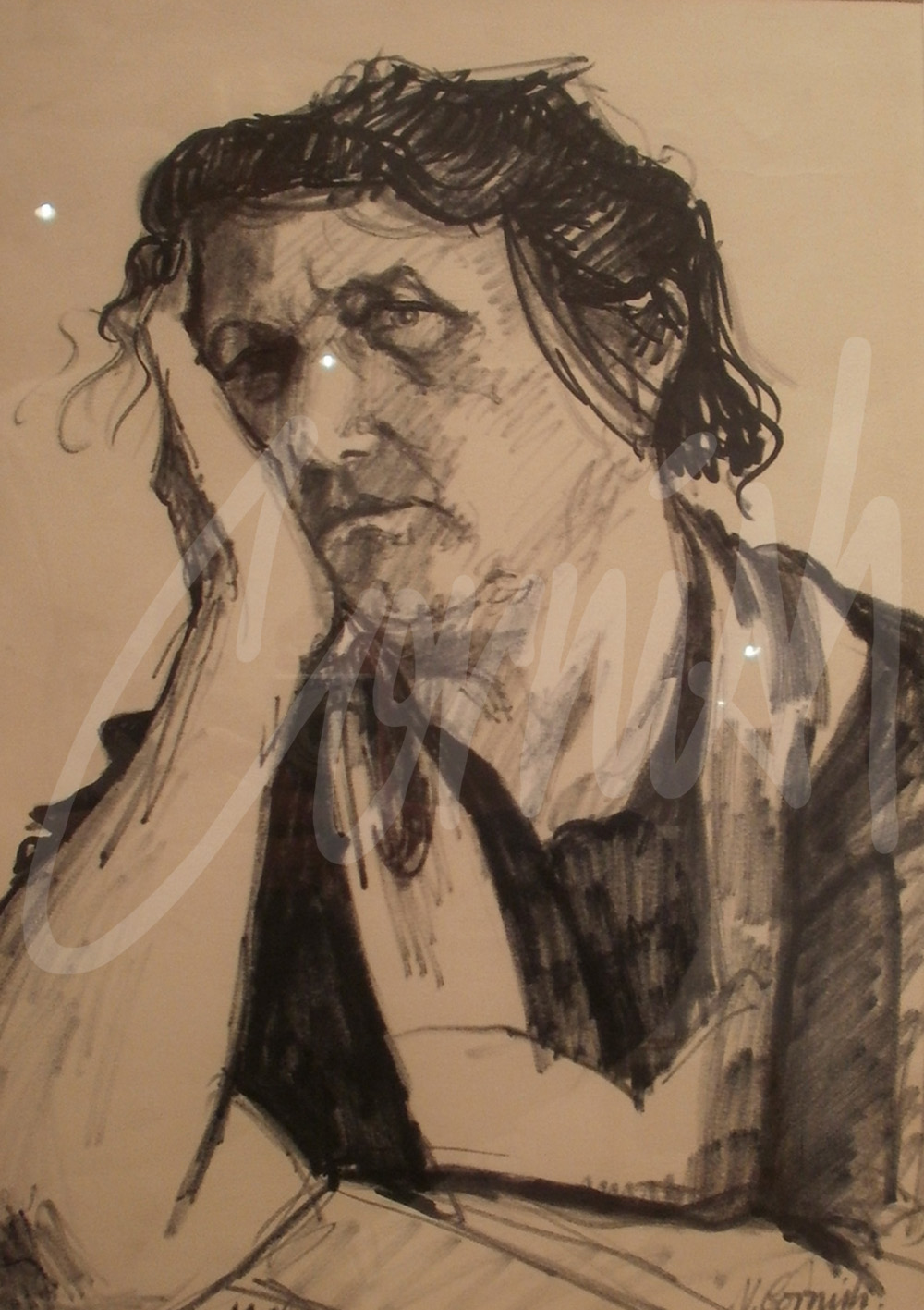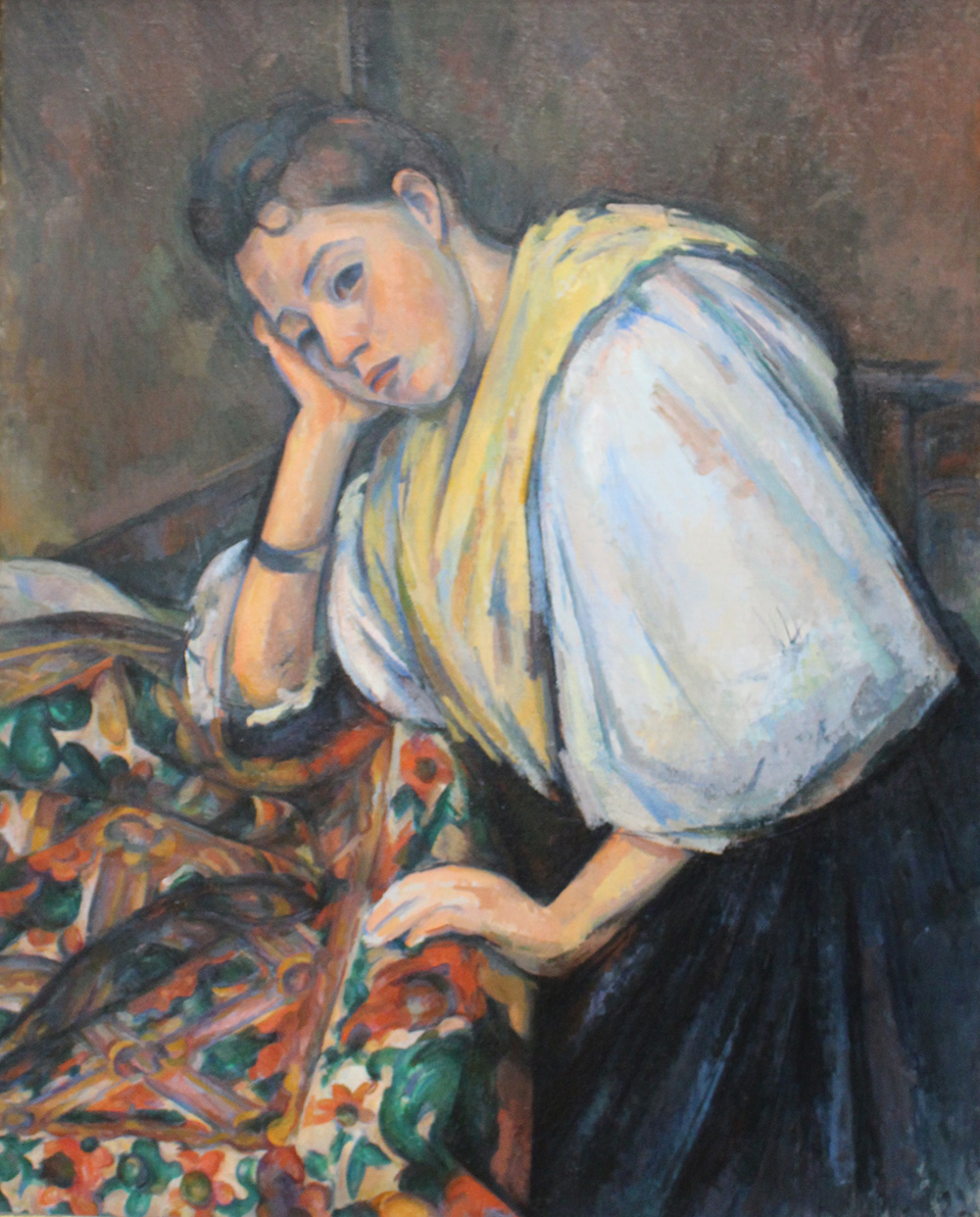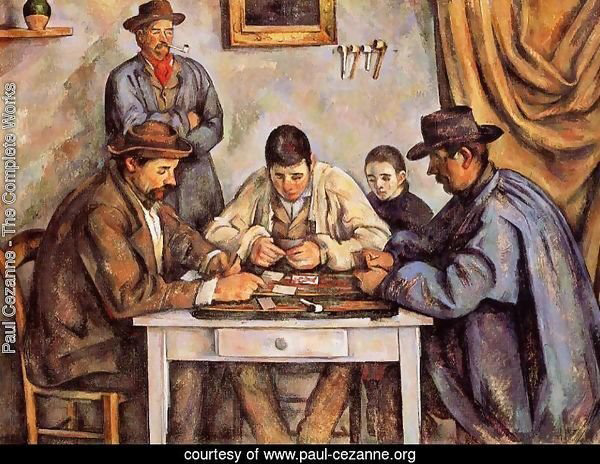Latest News
Eddy’s Fish Shop
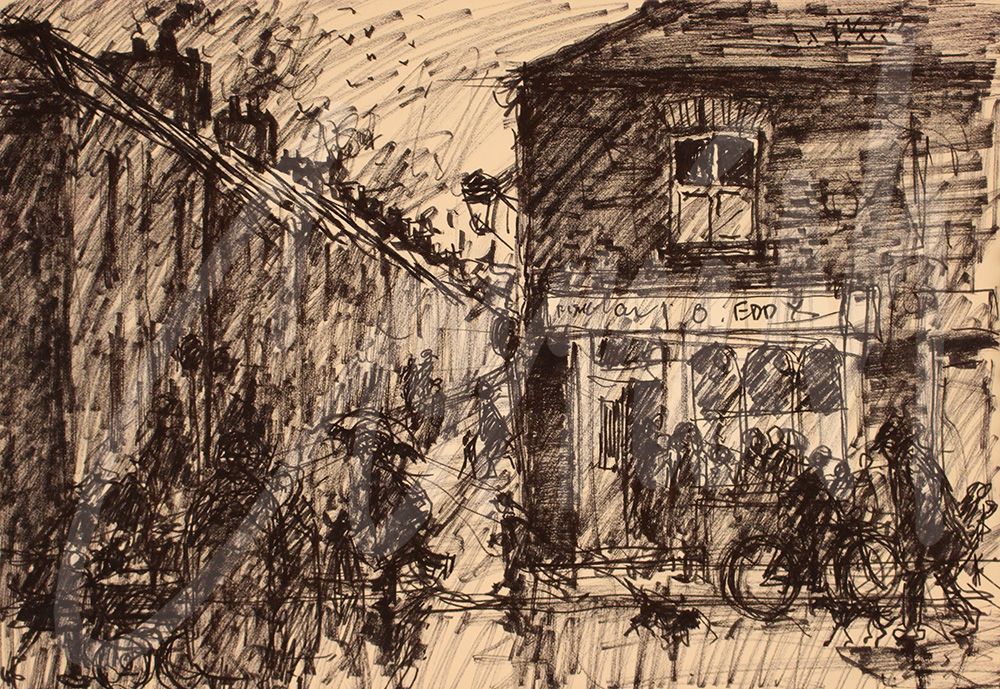
Eddy’s Fish Shop, now demolished, was a focal point in the community. This was from a time when ‘corner shops’ were a common feature in many towns and villages.
Cornish’s interest in Eddy’s Fish Shop began one day in the early 60s when he called to see Stan and Mary Eddy in their shop and he asked the question:
‘Stan, do you mind if I paint your fish shop?’
Stan and Mary Eddy originally owned fish and chip shops in Church Street and Villiers Street and there were other fish and chip shops in the town. Mary and Stan met in the RAF where Mary was a truck driver and Stan had returned from living in the USA. During a period of change in Spennymoor, the fish shop at the bottom of Craddock Street became available as Stan’s brother Oswald approached retirement. The shop was surrounded by houses, pubs and The Rink Ballroom (formerly The Clarence Ballroom) where Norman first met Sarah in 1944 . Oswald’s initial was retained on the sign outside and the location was perfect for brisk trade. It also interested Cornish who saw the potential for a scene which was to become one of his most admired subjects, evoking memories for so many people who grew up at a time when fish and chip shops featured with significance in communities.
The shop remained open until circa 1974 when it was demolished along with the ballroom and other unsafe buildings. The paintings and drawings are all about community and a particular slice of life. Stan and Mary’s sons became popular stalwarts in the community - Ronnie as Chair of Governors at Rosa Street School, (located a short distance from the shop) and Gordon who served with distinction as a member of the Durham Constabulary for thirty years.
In his own words:
The local collieries have gone, together with the pit road. Many of the old streets. chapels and pubs are no more. A large number of the ordinary but fascinating people who frequented these places are gone. However, in my memory, and I hope in my drawings, they live on. I simply close my eyes and they all spring to life.
The final word from Ronnie Eddy:
‘The chips were regarded as good, but couldn’t touch the chip van!’
Eddy’s Fish Shop is featured in Behind The Scenes: The Norman Cornish Sketchbooks, and the original location in Craddock Street may be visited as part of the Norman Cornish Trail. www.normancornish/trail
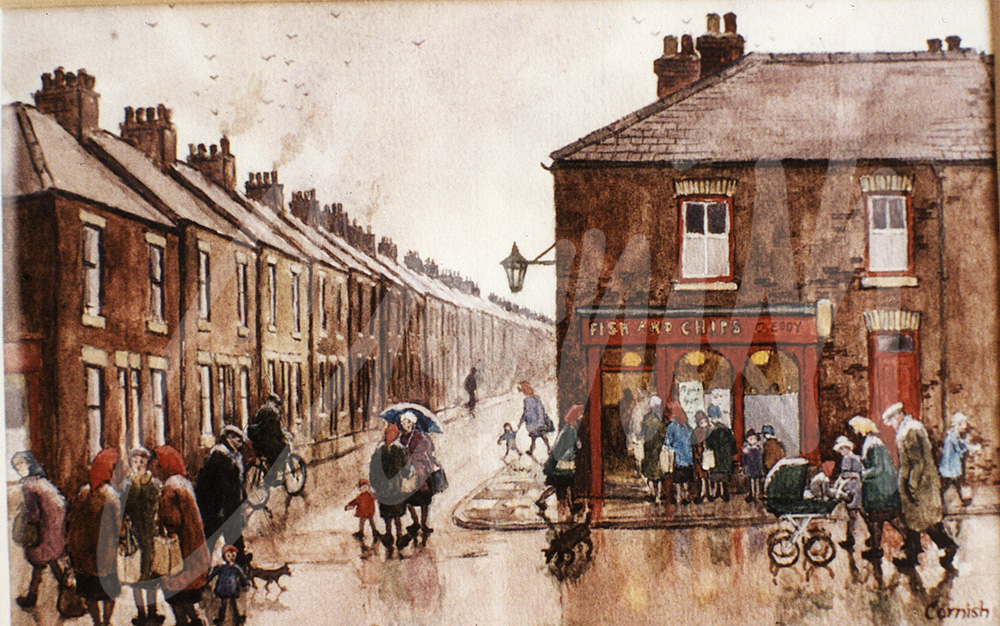
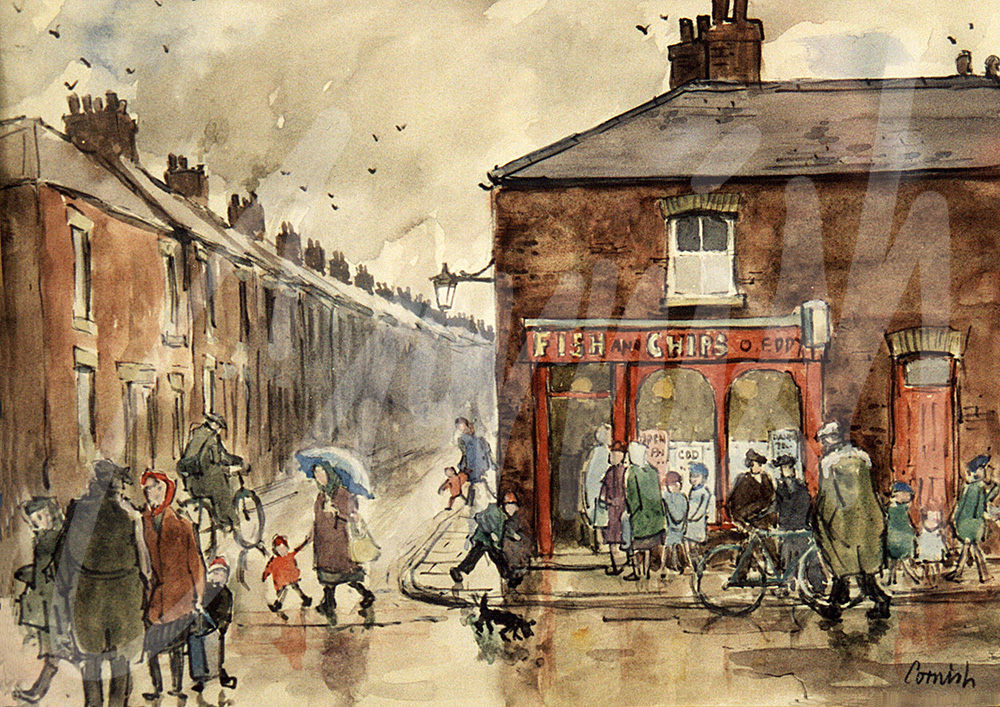
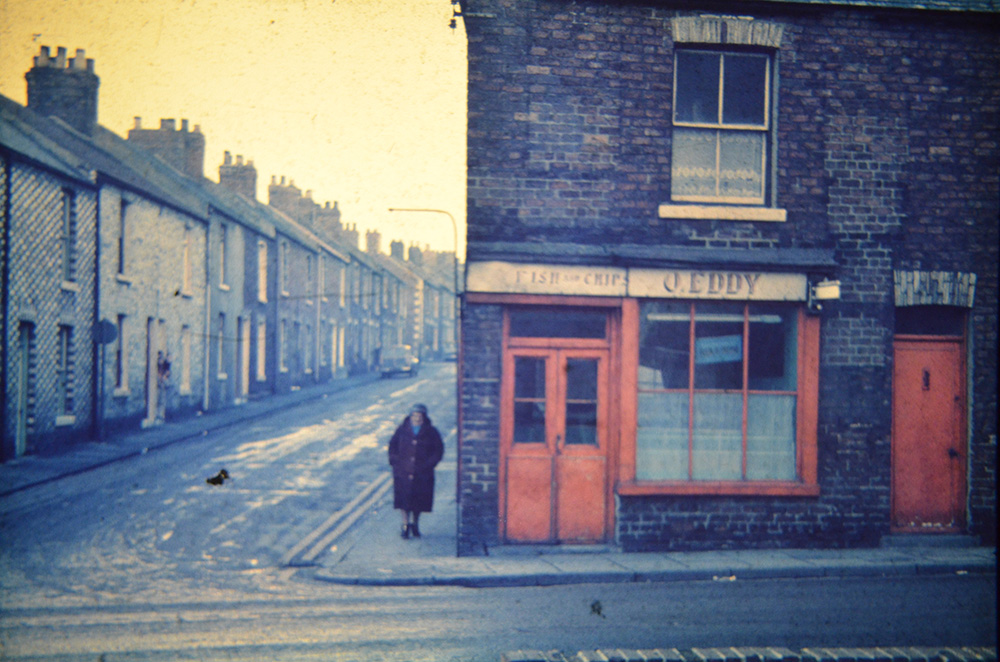
The Trimdon Level Crossing
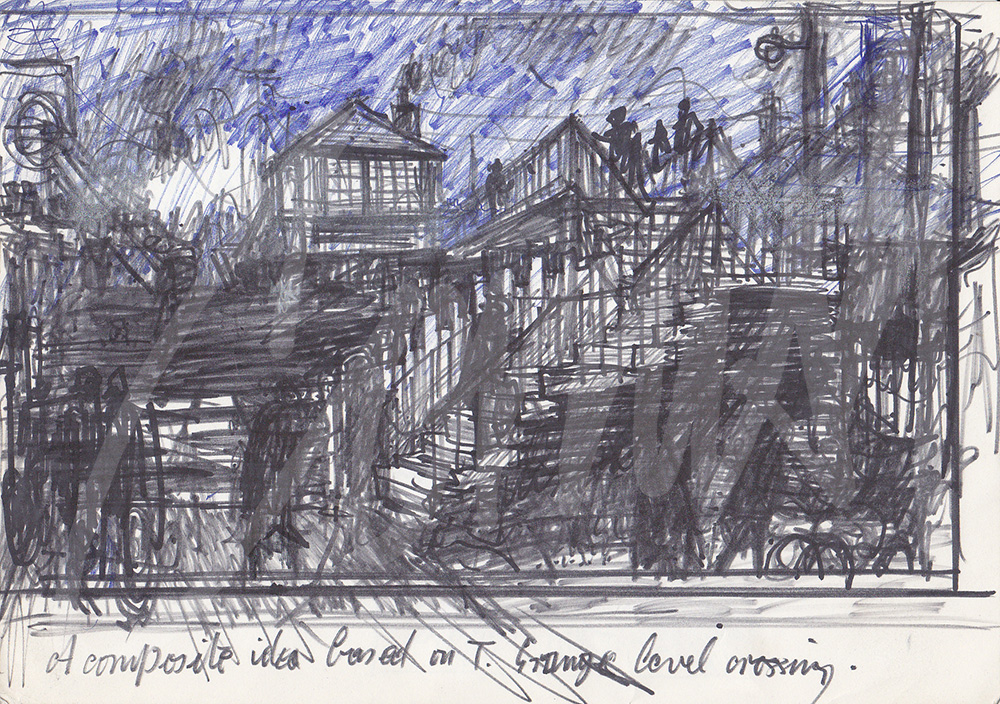
Cornish’s evocative paintings and drawings provide an unrivalled social record, chronicling an important era in English history. His work is part of a deeper and more complex unravelling and re-evaluation of history.
His observations of people and places are a window into a world which no longer exists, but which he has immortalised for us all in moments captured in drawings and paintings. His journey, from former miner to professional artist, is a story of determination and resilience to overcome hardship and prejudice. Working class painters were deemed to be ‘Sunday painters’ and there was an assumption of naivety of such artists by the Arts establishment because of their occupation, as well as implied political associations. Cornish was unable to attend The Slade School of Art in London because he was in a reserved occupation in 1939. There are examples of prejudice and resentment from some of his contemporaries because he lacked an academic background. Cornish was the victim of an unfortunate example of prejudice during the 1940s which was to eventually lead to a positive outcome.
Cornish met Sarah Bartley in 1944 at a dance at the Clarence Ballroom in Spennymoor.. The courtship lasted for two years until they were married at Rose Street Methodist Chapel in Trimdon. Sarah Lived in Trimdon and was a nurse during the war years and also an accomplished pianist. Trimdon was 8 miles from Spennymoor and Cornish would spend some time at the family home with Sarah and her 3 brothers and 3 sisters. Her father was a former miner and her grandfather was a founder member of the Blackhall Colliery band.
Coal mines in every town and village had connecting railway lines to transport the coal to coastal ports such as Tyne Dock. Level crossings, which still exist today on some railway lines, were a feature in many parts of the county. Whenever a locomotive hauling dozens of coal trucks was on the move the level crossing gates would close to traffic to enable safe movement. Cornish travelled to Trimdon from Spennymoor on the TMS (Trimdon Motor Services) and on many occasions the bus would have to stop at the Trimdon Grange level crossing and, waiting patiently, Cornish would take out his sketchbook and pen to capture this moment in time. The scene showing the level crossing, steam train, terraced houses and folks going about their daily lives is typical of scenes throughout County Durham in this particular slice of life.
Prior to meeting Sarah Bartley, Cornish had been engaged to a different young lady. He was rejected by her family because he was a miner.
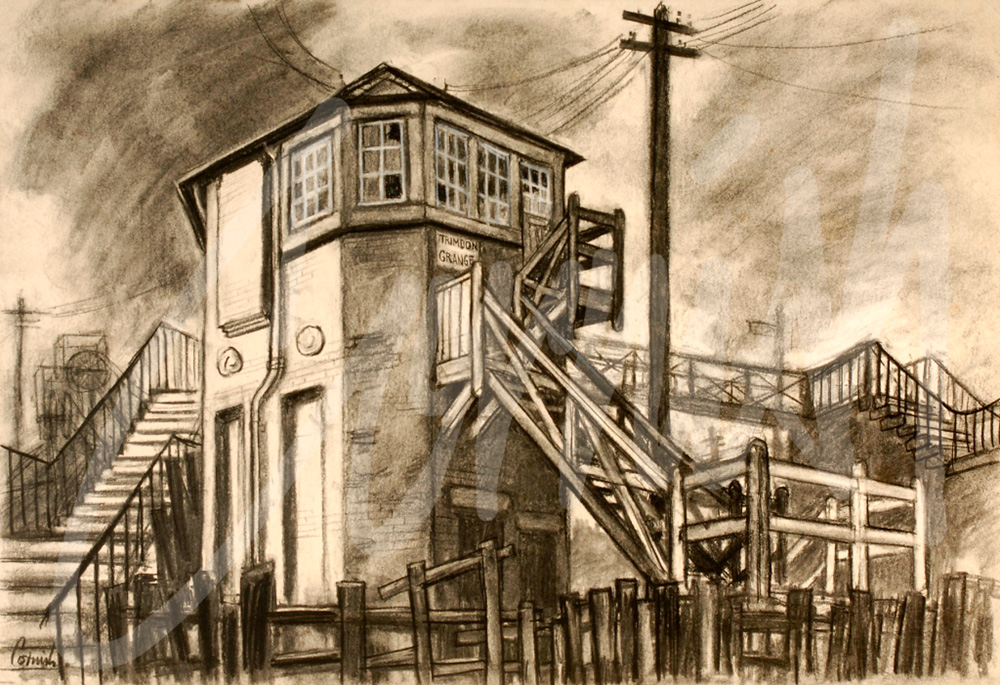
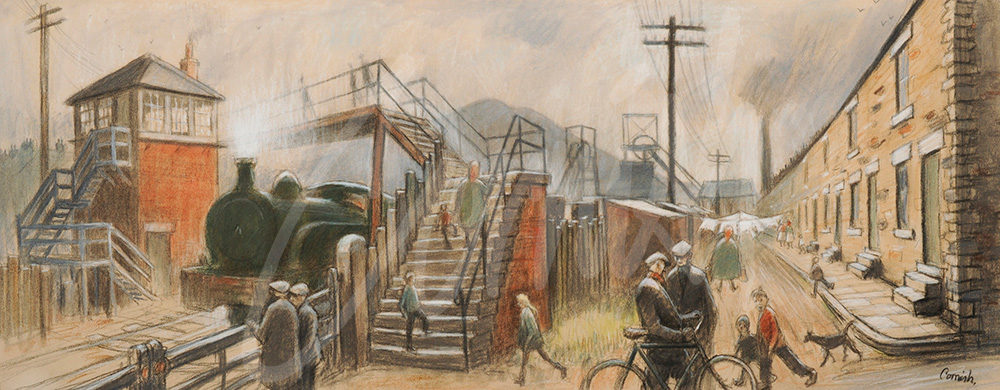
Classic Cornish: The Pit Road
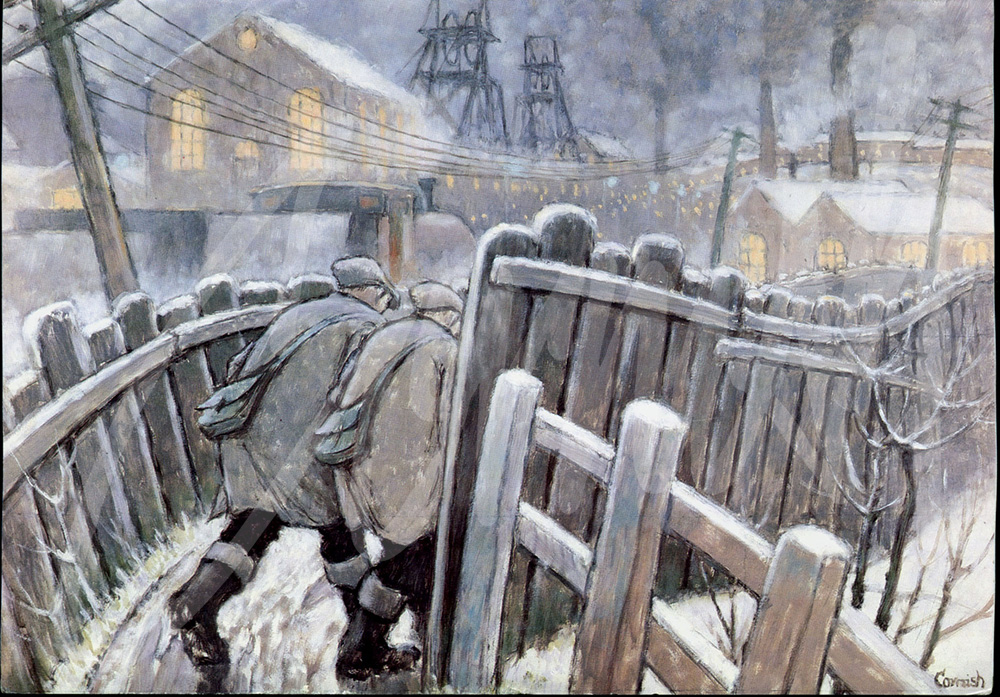
The Pit Road is perhaps Cornish’s most iconic image, often repeated, with numerous variations throughout his career. Cornish started work on Boxing Day 1933 and walked the pit road every day for the next 30 years. The journey began as he left the front door of his home at Bishops Close Street and continued immediately through the tunnel under the railway line and onward to the pit. It was a journey of three miles each way, which he travelled along with hundreds of other men, in all weather conditions, and at different times of the night and day. Within five miles of Dean and Chapter Colliery there were some 135 collieries at various stages of working, closing and re-opening. The impact of the environment was pervasive.
The pit road provided everything Cornish needed for inspiration:
“After walking along this road, winter and summer, it naturally becomes a significant part of one’s life. To watch the man ahead of you plodding resignedly through this man- made world is a subject which demands to be drawn again and again.”
The dip in the path, depicted in some versions of this subject, was caused by subsidence owing to underground workings shortly after Cornish started work in 1933. The painting is graphically accurate except for the colliery itself which he has moved to the right for reasons of pictorial composition.
Cornish found huge symbolism in the many shapes encountered on his three miles walk to work. He often said that the men were treated like slaves; telegraph poles along the route reminded him of crucifixes and on every one of them was a miner hanging crucified.
“One wonders with the passing of time, when no present-day pitheads actually exist, if pictures of them might one day be thought of as picturesque and as socially significant as old windmills.”
Behind the Scenes: The Norman Cornish Sketchbooks, contains a chapter which appraises Cornish’s work in the context of life in the Durham coalfield. There are 58 drawings and completed works showing the variations in this iconic image, along with carefully selected quotations which disclose his personal thoughts and the challenge of being caught between two very different cultures – coal production and aesthetics.
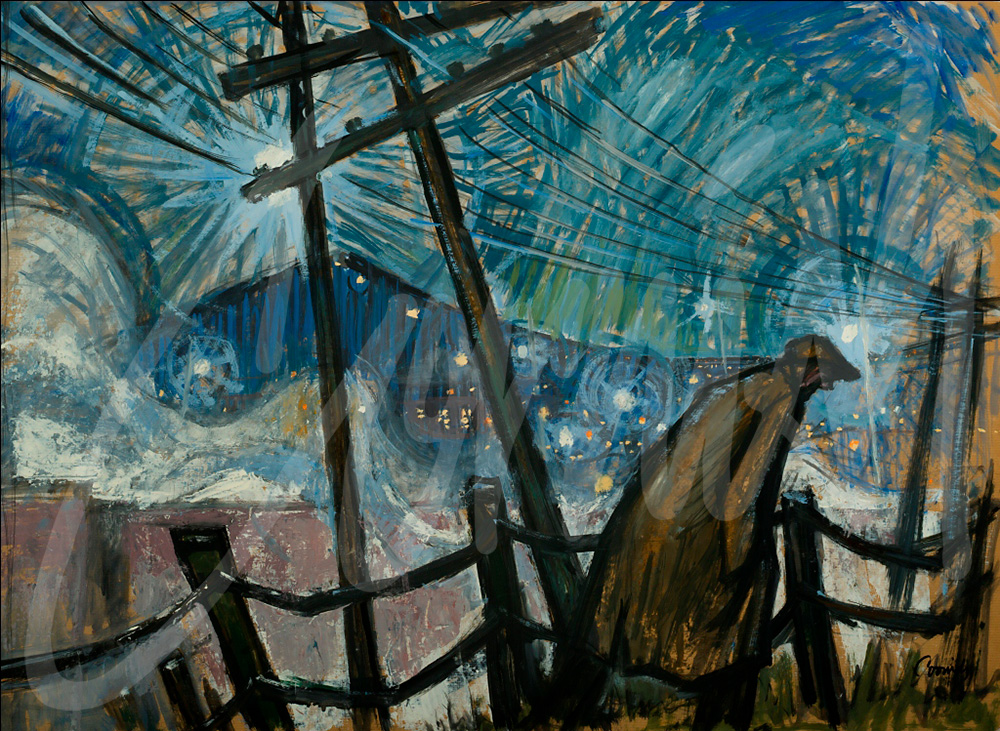
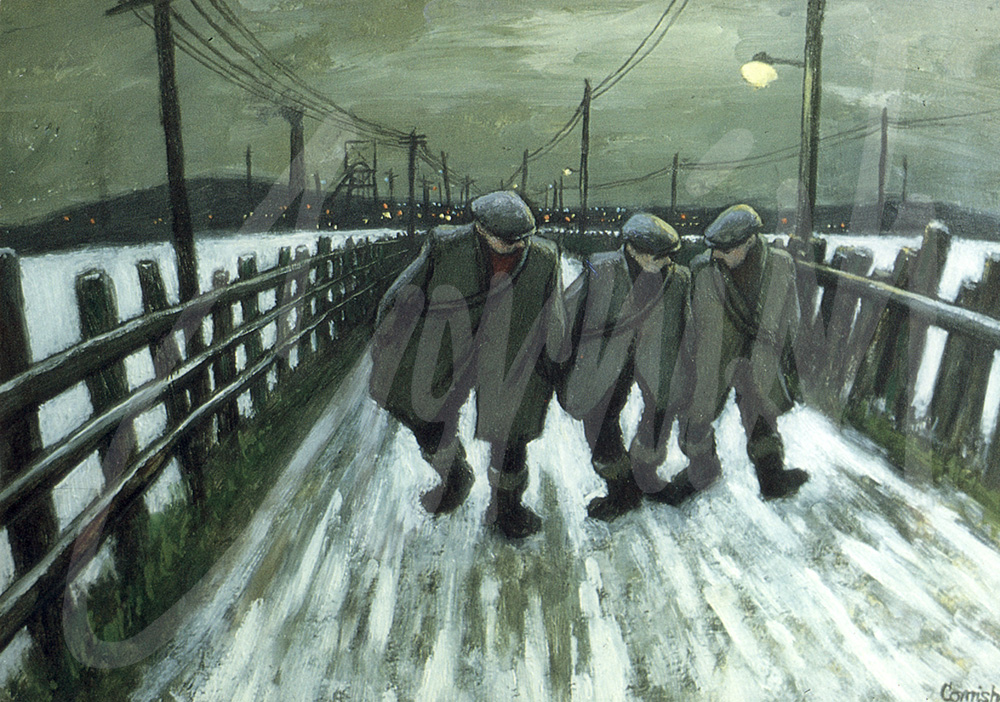
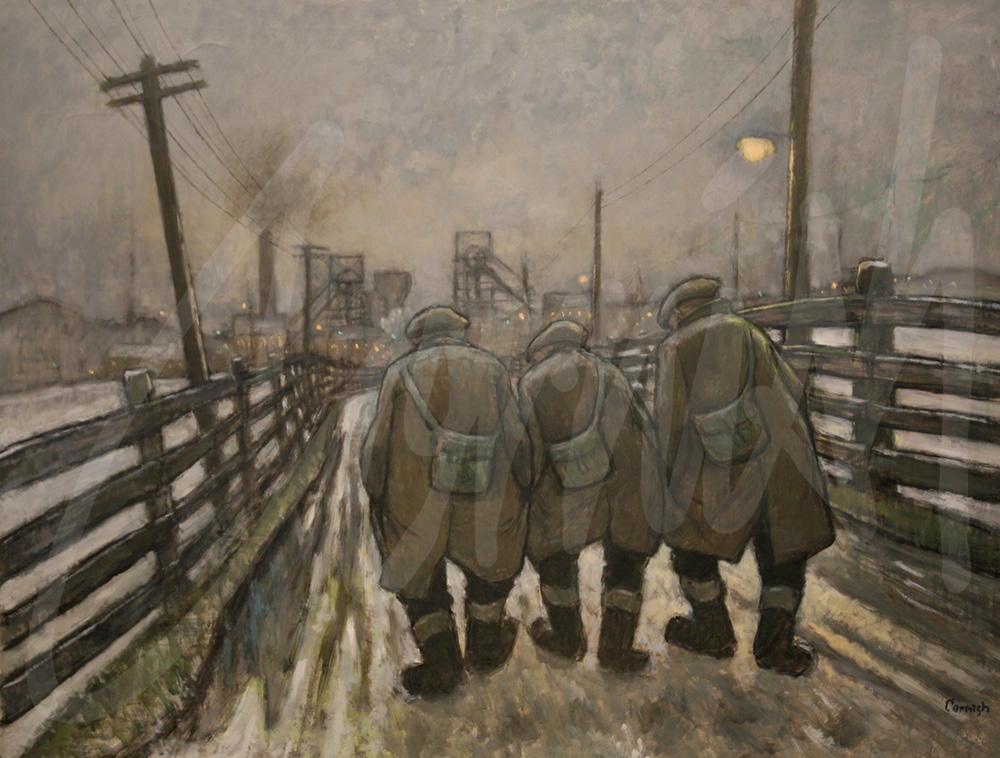
Sarah Cornish: ‘Hold it there’
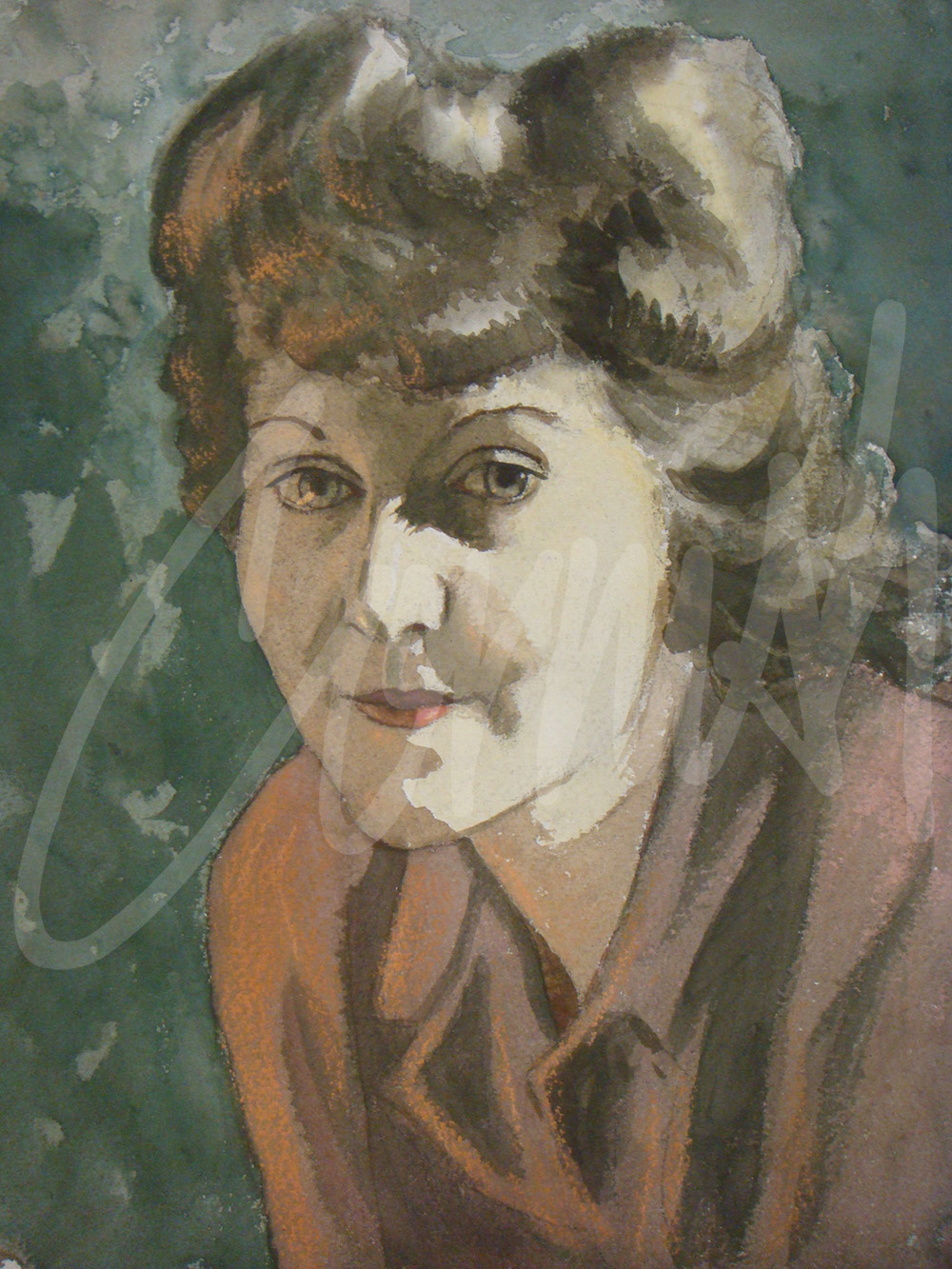
Cornish’s evocative paintings and drawings provide an unrivalled social record, chronicling an important era in English history. His observations of people and places are a window into a world which no longer exists outside but which Cornish has immortalised for us all with its struggle, its beauty, its squalor and its dignity.
In a recorded conversation during 2007, Cornish was asked if there were particular pieces of his work which he regarded as personal favourites. He suggested five examples, beginning with his studies of his wife Sarah, acknowledging the huge contribution she made to his success and loyal dedication to their family and home.
They met one weekend in 1944 at a dance at the Clarence Ballroom in Spennymoor and two years later the couple were married at Rose Street Methodist chapel in Trimdon Grange. The newly- weds lived in with Cornish’s paternal grandmother and conditions were far from ideal with an earth closet and no hot water. There was no room for Cornish to paint, although the Spennymoor Settlement was a short distance away. Norman and Sarah eventually moved to 33 Bishops Close Street in 1953 following several years of temporary accommodation.
Towards the end of his career in mining, Cornish suffered lower back problems; he was anxious about leaving the colliery and the relative security of a modest income and family home. Sarah insisted that if he didn’t put his notice in then she would! The move to 67 Whitworth Terrace soon followed in 1967 enabling Cornish to work in a suitable environment to develop as a professional artist.
Sarah Cornish provided the stability and continuing support essential for her husband to develop his career. Her quiet nature belied her inner strength, patience and calming demeanour which was essential for Cornish to concentrate on his work and future success. She was also the subject of many drawings and paintings throughout her life. Often while working and sometimes in more formal poses. ‘Don’t move’ and ‘hold it there’ became the signal to pose for Cornish in all sorts of fascinating domestic situations which would be typical of the experiences of so many women in this particular piece of social history.
“I many times drew and painted pictures of my wife Sarah, when she was busy with household chores, especially when she was knitting. I felt her prayer-like attitude gave the pose of sanctity and her knitting was her way of praying, really, doing her best to keep our home and children together. This portrait represents a pose which was typical of thousands of women who were heroines of the coalfield.”
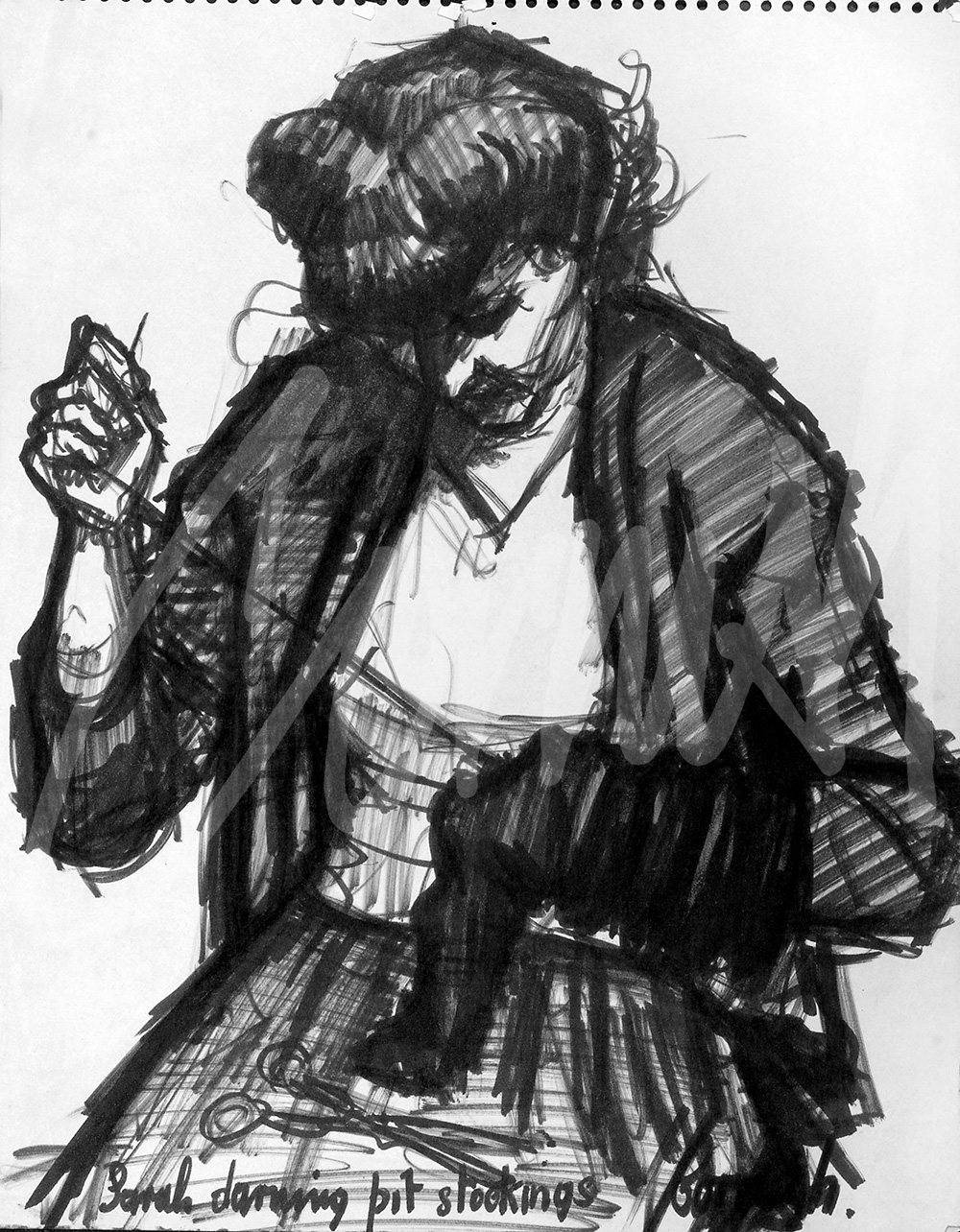
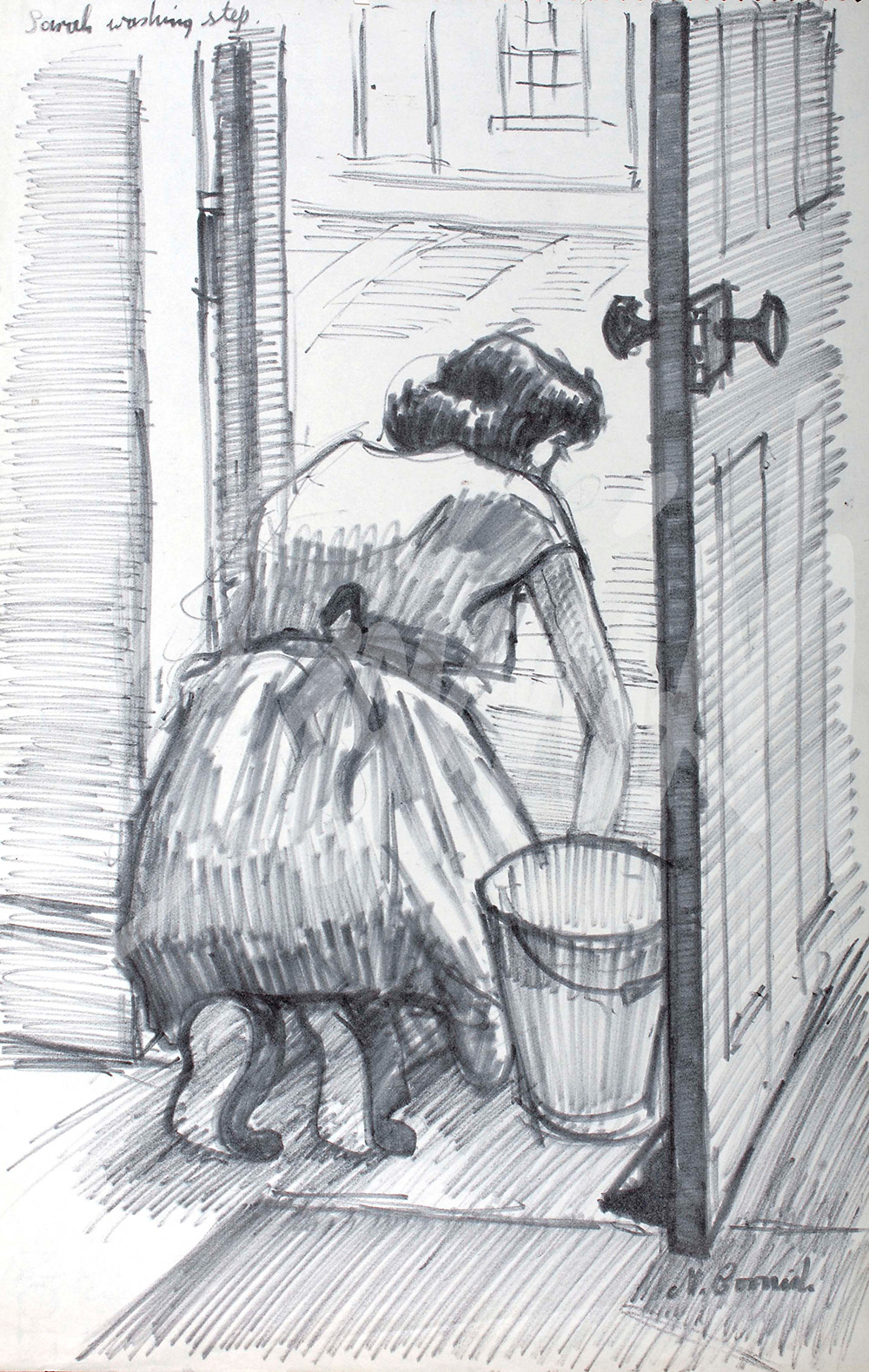
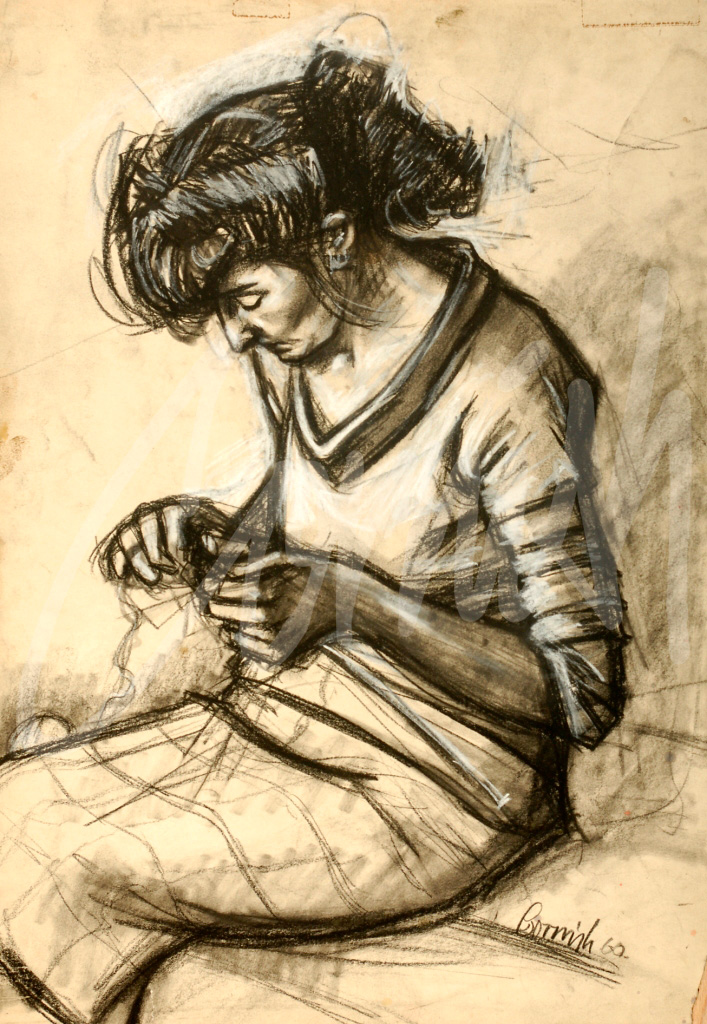
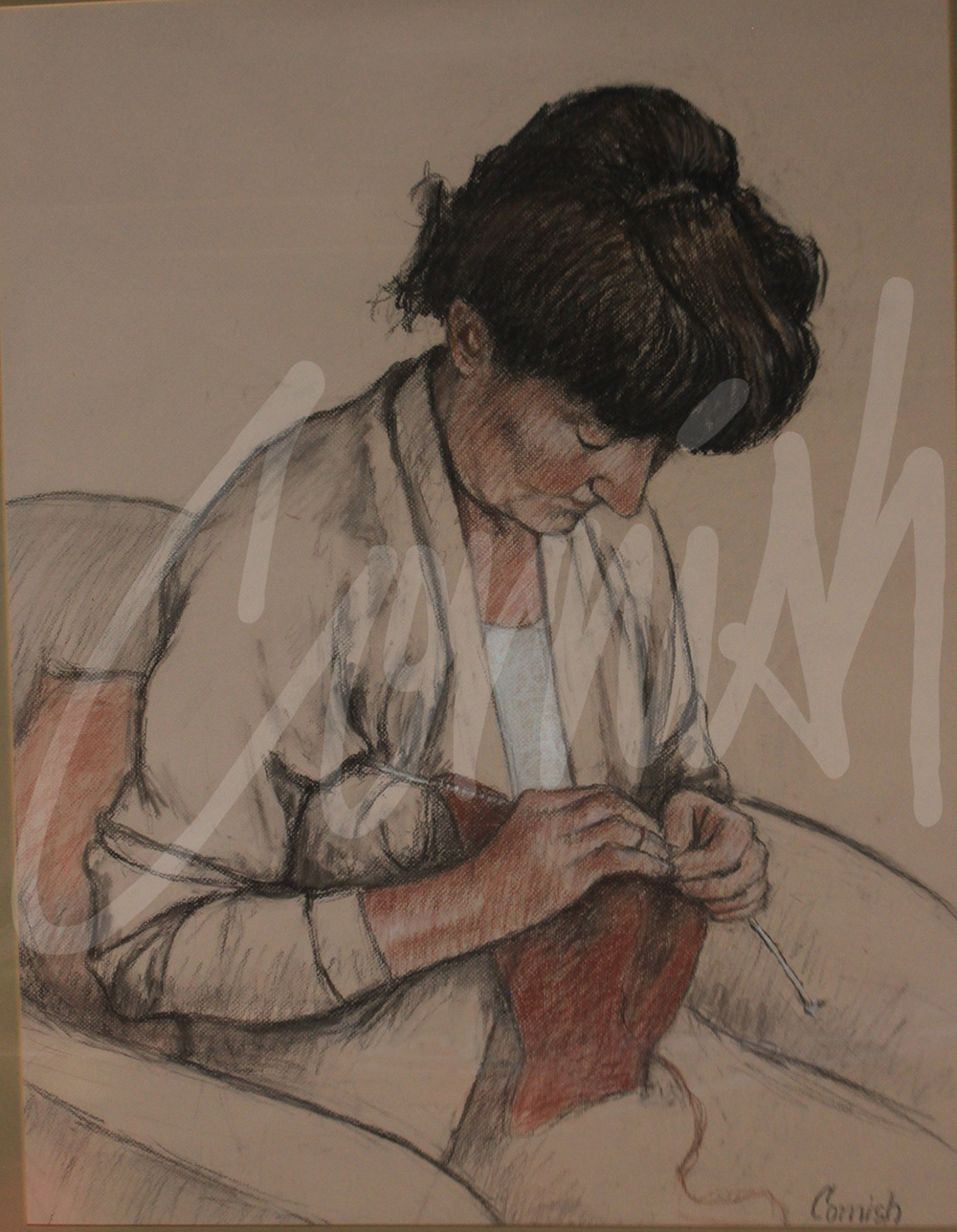
Norman Cornish and Paul Cézanne
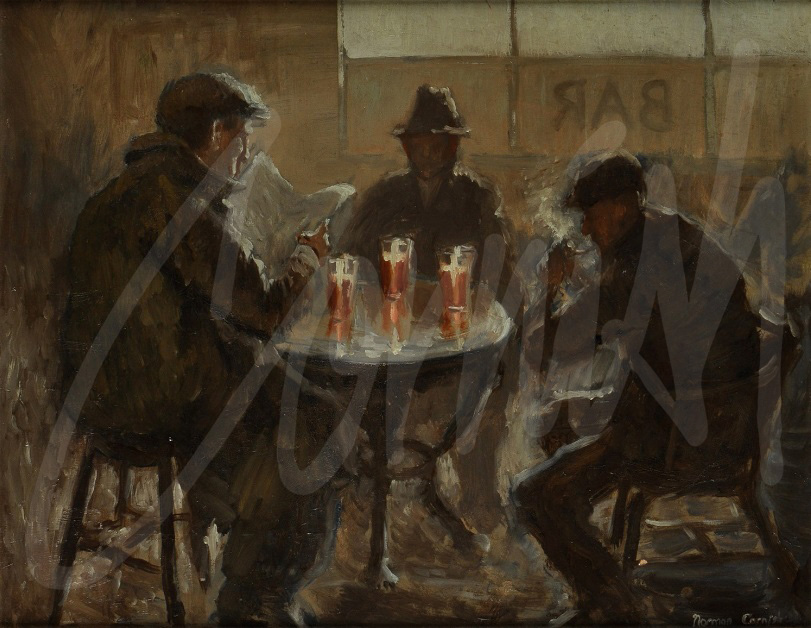
On January 16th 1952, Cornish exhibited, along with Herbert Dees and Robert Heslop, in the Crow’s Nest Hotel in the Haymarket, Newcastle. It was an unusual venue organised with the support of Newcastle Breweries Ltd. The Three Beers was singled out for particular attention by Ivan Geffen in his Evening Chronicle review as ‘the outstanding picture in the exhibition and the best picture by an amateur artist I have ever seen’. This painting is one of a series of bar scenes which Cornish re-visited throughout his career.
Paul Cézanne , the French Post- Impressionist artist, faced rejection for a number of years at the Paris Salon between 1864 to 1869 and was ridiculed by art critics. He concentrated on a few subjects and his portraits were drawn from that which was familiar, so that not only his wife and son but local peasants and children served as subjects.
Cornish also faced rejection by the Miners’ Welfare Committee in 1942 when he applied for a grant to study art under Robert Lyon at Armstrong College, Newcastle. Although the Miners’ Welfare Committee was sympathetic, under the regulations governing educational grants Cornish was ineligible.
Both artists worked on themes repeatedly and almost obsessively, wrestling in their minds to find a faultless composition. Cézanne produced more than 900 paintings, 400 watercolours and many incomplete works.
The Card Players is a series of oil paintings which vary in size, the number of players and the setting in which the game takes place. Cézanne made studies of the individual players and only brought them together as components on the canvas. He started the series with smaller canvasses, using them to establish his iconic compositions and fine tuning the poses. A similar approach was adopted by Cornish.
In 2012 The Card Players was sold at auction for a world record price of £158 million.
In conversation many years ago, Cornish commented that there were no monuments anywhere in the world in memory of critics.
The Three Beers Norman Cornish 1951, The Card Players Paul Cézanne early 1890s
The Artist’s Mother Norman Cornish 1950s, The Italian Girl Paul Cézanne circa 1895
